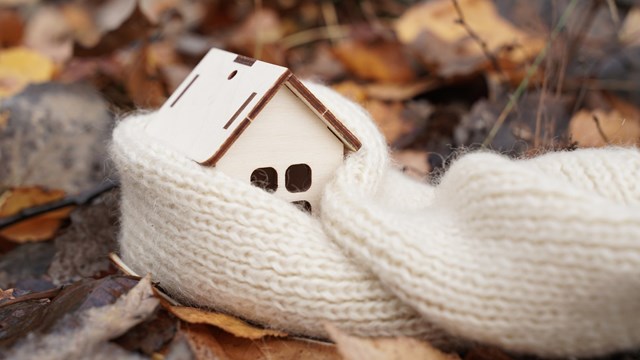The first robin appears. The sun stays out a little longer in the evenings, the tiniest nubs of crocus begin to break through the mud, and landscape crews begin mucking out flowerbeds. Just as sure as turning the calendar page to March 20, these are all signs of the arrival of spring—and with spring comes every condo association’s annual spring cleanup, clearing out the cobwebs and bringing hope that those winter blahs are finally behind us.
For HOA management, boards and contractors, the annual spring cleanup is a lot of work—and sometimes a lot of stress.
Hit the Ground Running
For most co-op and condo associations, plans for spring cleanup begin well before the last snowflakes fly.
“Advance prep for the spring is actually completed in the fall,” says Rick Fry, PCAM, a property manager in New Jersey. “We’ll do a walk-through to assess the condition of the common elements and what might be in need of repair in the spring.”
During those fall and winter months, management also will look at the reserve schedule and the deferred maintenance schedule. In January or February, the board might bring up a project that has been on the back burner for a few months or years and determine if the spring or summer months might be the time to tackle it.
When the first hint of spring finally does arrive, management will do another walk-through to assess and make note of any damage that happened during the winter months. This inventory is particularly important in our region of the country where salt, ice, and high wind wreaks havoc on everything from tennis courts to roofs to driveways.
On these walk-throughs, management may go out first to take a look around and then will do a second tour with members of the board or landscape committee. “I want them to take a look around and spot things I may have missed,” Fry says.
Any number of problems can be spotted on these walk-throughs. “You might see frost heaves, cracked cement, potholes,” says Gary Wilkin of the Wilkin Management Group Inc. in Mahwah. “This is the time of year when you have to get your checkbook out.”
Fry agrees. Roof inspections, for example, can yield popped nail heads that need to be hammered back into place or missing shingles that need to be repaired. At the end of the day, the repair list can be a long and varied one.
After the inspection tours, the next step is to make a priority list and determine how and when things will be addressed. If major problems appear to have arisen, a contractor, engineer or specialist might be called out to examine the area as well.
Making the Green Shine
In addition to the big jobs that sometimes crop up in the spring, landscaping is perhaps the biggest undertaking once the robins return and the parkas come off. “The first thing is to make sure everything gets cleaned up—branches and debris all raked out,” Wilkin says.
Steve Yarnell, regional manager for The Brickman Group, a commercial landscaping firm with regional offices in Langhorne, Pennsylvania, agrees. “The most important thing in the spring is making sure you’re going into the growing season with clean beds.”
And when those beds have been cleaned out, the first applications of herbicides will be added, including pre-emergent and post-emergent weed killers—products that can eliminate some weeds before they emerge and products that will eliminate them after they emerge. “Existing weeds will come through the mulch later if you don’t do a post-emergent application,” Yarnell adds.
A walk-through with the landscaper will be done in mid-to-late April once some of the plants and flowers start appearing so that an assessment can be made of what shrubs, trees, bushes or flower beds need attention or replanting. “Last year, for some reason, there was enormous loss on rhododendrons,” Wilkin says. “Those are the types of things you’ll look for.”
Spring is also the time when flowerbeds will get edged.
“A lot of times, the areas can be edged too deep,” Yarnell says. “We call them ‘ankle-breakers.’ It’s also not good for mature trees to be surrounded by troughs of water” which is what can happen with edges that are too deep.
The landscaper will also look at your association’s turf and lawn, says Fry. Fortunately, most lawns make it through the cold months relatively unscathed, Yarnell adds. Aside from a few varieties of troublesome fungi, “which are usually not too detrimental.”
To get the best lawn, though, it’s important to determine the overall health of the turf early on. “It’s always good to take soil tests,” Yarnell says. “They will help you determine if you need fertilizer and what kind you need.”
These days, more and more “green” lawn care products are available, too, making fertilization and weed killer applications more eco-friendly. Because of increases in chemical costs, things called “bridge products” which are part synthetic and part organic are becoming more readily available and less expensive. This means more HOAs can go green without spending more money, Yarnell says.
Your landscape care professional will also check trees and walkways to ensure that branches are not creating potential hazards on pedestrian paths or in common areas. If trees have gotten unruly, crews will begin pruning.
“When we’re out doing spring cleanup, that’s a great time to cut back perennials or ornamental grasses, so that they can start regenerating from their bases,” Yarnell adds. “In February and March, it’s also a good time to look at non-flowering shrubs and do rejuvenative pruning.”
“Taking care of plant materials is a lot cheaper than replacing it,” Wilkin agrees, underscoring the importance of thorough landscape walk-throughs.
During these initial cleanup days, the irrigation system contractor also will be called in to take a look and ensure that the HOA’s sprinklers and drainage systems are in working order. “They’ll turn water on and go through the system zone by zone,” Fry says. “They’ll check heads, make minor adjustments and then prepare their reports and make estimates for any repair work that needs to be done.”
Even though the sprinklers are checked in April, they usually will not be turned on until May, giving the ground time to dry out from the winter snows, ensuring that grass and other plants are not oversaturated—and also saving the association some money on water.
Winter’s Hard on Everyone
Plants, trees and lawns are not the only outdoor elements that can suffer in the cold months. Salt can cause significant problems and harm many different surfaces. Removing its residue from roadways and sidewalks is always one of the first items on the spring cleanup list, a task that is usually done by a street cleaning crew that is contracted separately from the landscaping team.
“Paving is always a potential expense,” Fry says, adding that most paving, if it’s done right, should have a useful life of 20 or 30 years. Problems can arise if the work was not done properly in the first place—that’s when winter’s freeze-and-thaw cycles can start causing issues.
Tot lots, tennis courts and swimming pools also will need attention in these spring months as crews get ready to open them up for resident use again. Crews also may also add additional sodium to the water system to avoid rust spots on the sidewalks, says Fry.
Sadly, It Doesn’t Pay for Itself
So how do all these repairs, replacements and inspections get paid for? As with anything, it is all a matter of planning ahead. For things like landscaping and cleanup, these items “are usually part of the existing contract” with the vendor, Wilkin says. “You may have to budget extra dollars for plant material, turf, chemical applications and things like that.” Those first cleanups though and all the annual work that goes into getting the outdoor areas back into shape should, though, have been negotiated into the initial contract.
For things like pothole repairs, it is likely that the money for those fixes would come out of the association’s normal maintenance budget, while something like an extensive repaving already will have been made a reserve item and found a place on the repair schedule.
“There are always going to be additional line items,” Fry says, and those can often be paid for through the general operating budget. Rarely if ever will a spring cleanup result in any extra costs being passed on to the residents.
As with anything, it truly pays to plan for spring. As the seasons change, so too do the needs of the association and its property. Knowing what is coming can make the impact relatively painless, in terms of labor, time and cost.
Liz Lent is a freelance writer and a frequent contributor to The New Jersey Cooperator.







Leave a Comment